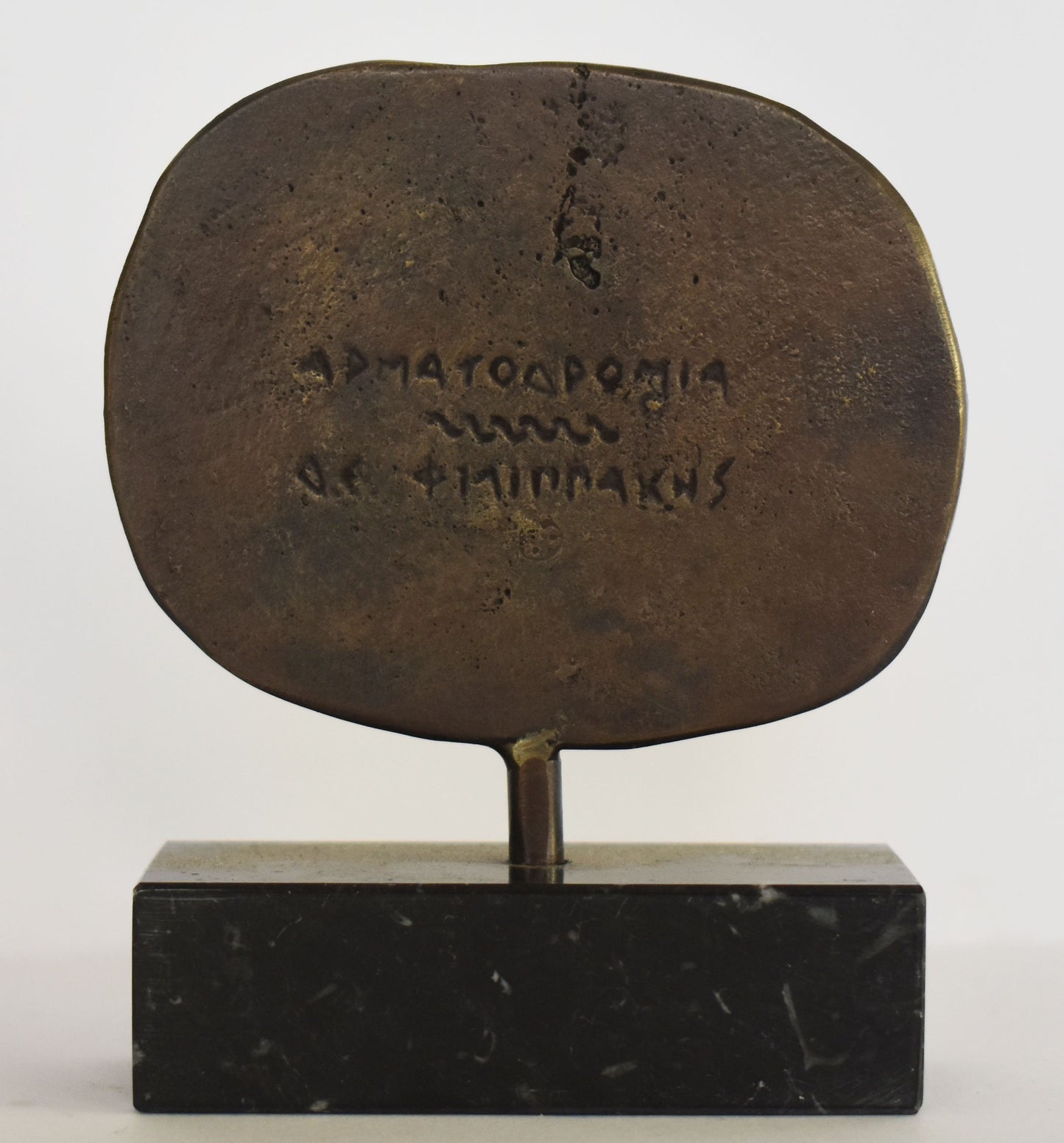Gallery Demeter
Chariot racing - Olympic, Isthmian, Nemean, Pythian, Panathenaic Games - Marble Base - pure bronze artifact
Chariot racing - Olympic, Isthmian, Nemean, Pythian, Panathenaic Games - Marble Base - pure bronze artifact
Regular price
€54,90 EUR
Regular price
Sale price
€54,90 EUR
Unit price
per
Tax included.
Shipping calculated at checkout.
Couldn't load pickup availability
Item Specifics
Condition: New, Made in Greece.
Material: Pure Bronze
Height: 9 cm - 3,55 inches
Width: 7 cm - 2,75 inches
Length: 3 cm - 1,18 inches
Weight: 330 g
Chariot racing was one of the most popular ancient Greek sport.In the ancient Olympic Games, as well as the other Panhellenic Games, there were both four-horse and two-horse chariot races, which were essentially the same aside from the number of horses. The chariot racing event was first added to the Olympics in 680 BC with the games expanding from a one-day to a two-day event to accommodate the new event (but was not, in reality, the founding event). The chariot race was not so prestigious as the foot race of 195 meters, but it was more important than other equestrian events such as racing on horseback, which were dropped from the Olympic Games very early on.
As a result of the rise of the Greek cities of the classic period, other great festivals emerged in Asia Minor, Magna Graecia, and the mainland providing the opportunity for athletes to gain fame and riches. Apart from the Olympics, the best respected were the Isthmian Games in Corinth, the Nemean Games, the Pythian Games in Delphi, and the Panathenaic Games in Athens, where the winner of the four-horse chariot race was given 140 amphorae of olive oil (much sought after and precious in ancient times). Prizes at other competitions included corn in Eleusis, bronze shields in Argos, and silver vessels in Marathon. Another form of chariot racing at the Panathenaic Games was known as the apobatai, in which the contestant wore armor and periodically leapt off a moving chariot and ran alongside it before leaping back on again. In these races, there was a second charioteer (a "rein-holder") while the apobates jumped out; in the catalogues with the winners both the names of the apobates and of the rein-holder are mentioned. Images of this contest show warriors, armed with helmets and shields, perched on the back of their racing chariots. Some scholars believe that the event preserved traditions of Homeric warfare



